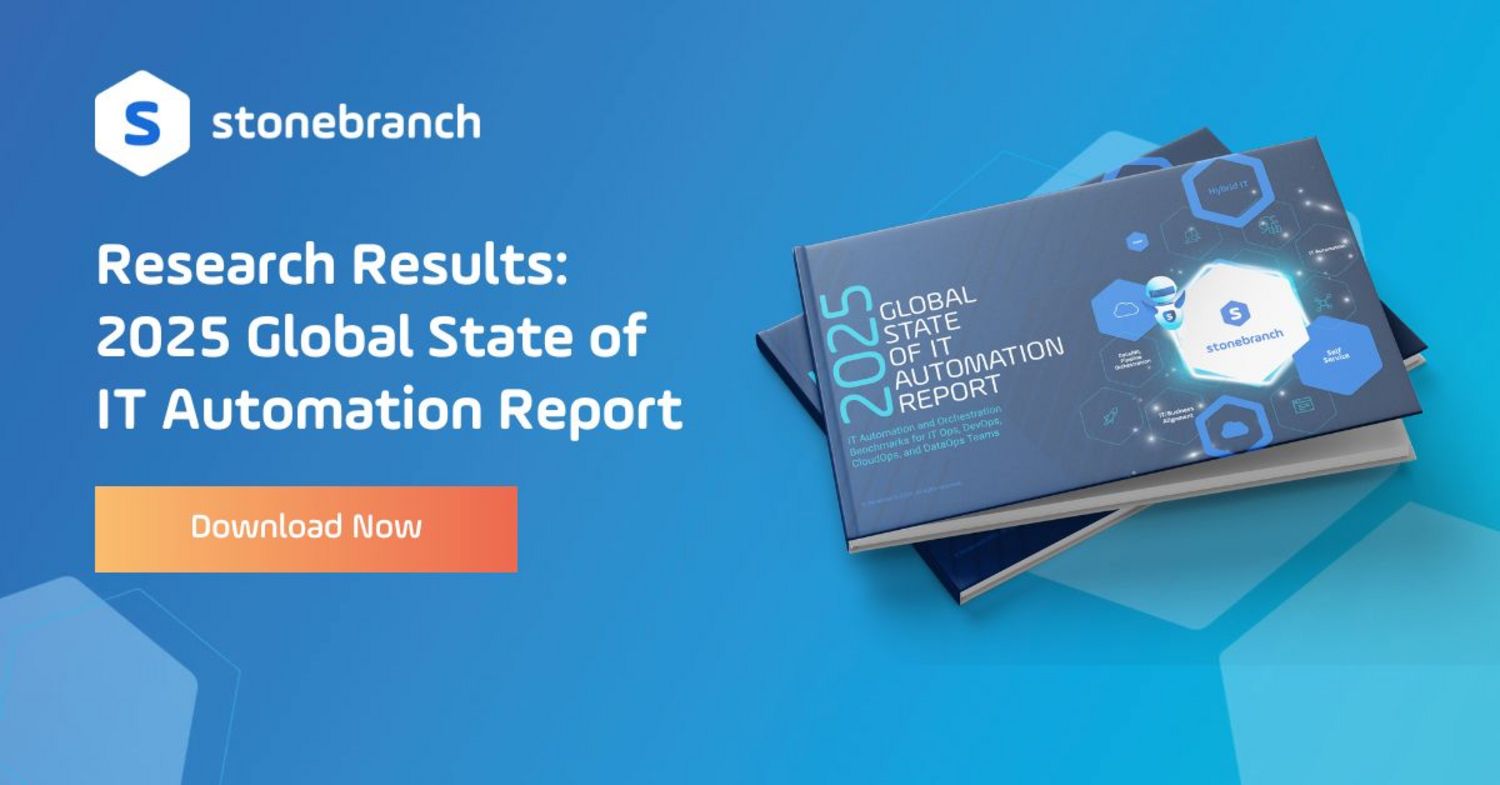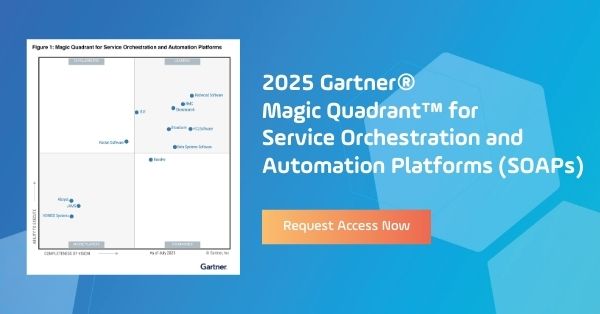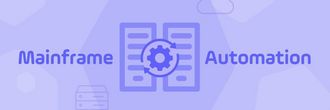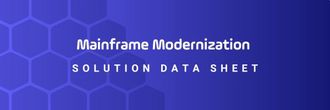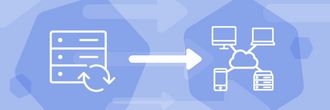How to Modernize Mainframe Applications: Strategies that Work
Discover the benefits of transforming legacy systems for hybrid IT environments, explore mainframe modernization strategies, and learn how to modernize mainframe applications.
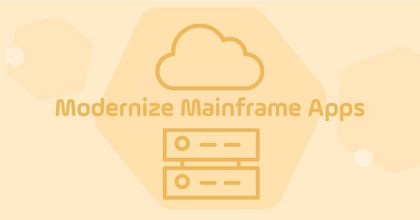
Mainframe applications have been the cornerstone of IT infrastructures for decades. Yet today's digital transformations add cloud computing, microservices, and software-as-a-service (SaaS) solutions to the framework. This means the mainframe is entering a new era where it must work with broader hybrid IT environments. To remain a load-bearing part of the enterprise architecture, the mainframe must integrate with modern platforms, support agile workflows, and reinforce a flexible, future-ready structure.
That's where modernization comes in. Let's examine the benefits, the challenges involved, and the approaches you can take to modernize with confidence.
What is Mainframe Modernization?
Mainframe modernization is the process of updating existing legacy applications to meet the needs of an organization's current technology landscape. Modernizing applications enables enterprises to stay competitive, increase agility, and enhance customer experience.
Mainframe modernization projects commonly include one or more of the following strategies:
- Hybrid Cloud Integration: Integrating your mainframe with the cloud offers the best of on-premises and cloud. A hybrid IT model combines the flexibility and scalability of the cloud and maintains the continuity of your mainframe.
- Cloud-Native Architecture: Going cloud-native involves breaking down applications into smaller, more manageable microservices that can be deployed as independent components. This makes it easier to develop and deploy new functionality without overhauling the entire application.
- Container-Based Microservices: Containers provide a lightweight and isolated runtime environment that allows applications to be easily deployed and managed. This approach allows organizations to modernize their systems without completely rearchitecting everything from scratch.
Why Modernize Mainframe Applications?
Mainframes remain reliable and secure, but there are several benefits gained by modernizing your mainframe footprint:
- Flexible Integration: Mainframe vendors have made it easier to integrate with other infrastructures using containerized microservices. Additionally, access to real-time webhooks and APIs makes it easier to enhance systems and offer new features to customers.
- Cost Optimization: Existing mainframe systems can be complex, costly, and difficult to maintain. Modernizing allows you to adapt to changes quickly, improve automation, and reduce costs. Leveraging industry-standard tools — including an operating model shift that embraces enterprise DevOps and AIOps — significantly improves the ROI.
- Workforce Alignment: Legacy mainframe code language skills (like COBOL) are in short supply. That said, vendors like IBM have made tools like Watson X Code Assistant for Z available to help developers automatically re-factor selected elements of an application and continue modernizing in COBOL. The modernization process opens the door to new programming languages, as well as agile methodologies like DevOps practices and jobs-as-code.
- Employee Experience: Employees expect their work technologies to be as good as their personal tech. Modernization can enhance customer experience by reducing downtime and making your services more user-friendly.

How to Modernize Mainframe Applications: Caretake vs. Leverage
There are several ways to modernize your mainframe, each with its own unique benefits and challenges. Choosing the right implementation methodology depends on your organization's capabilities and priorities. According to Gartner, a proper modernization strategy typically falls into one of two categories:
- Caretake: With this approach, the mainframe is not considered strategic, but nothing is being done to retire it either. This middle ground is less desirable because it’s less likely to drive innovation forward.
- Leverage: The most common category for most enterprises, leveraging the mainframe is best for organizations where the mainframe can best meet their workload requirements. Using this approach requires enterprises to rationalize their workloads and determine the best compute environment.
Leverage Your Mainframe: Integrate, Extend, and Modernize
For most enterprises, the best path to a modernized mainframe falls under the Leverage category. This strategy acknowledges the mainframe’s continued value — not as a relic, but as a powerful, load-bearing element of a modern hybrid IT architecture.
Instead of replacing or retiring the mainframe, Leverage strategies focus on rationalizing workloads across the most efficient platforms — whether that’s on-prem, in the cloud, or somewhere in between. This approach allows organizations to modernize incrementally by integrating the mainframe with modern systems, extending its capabilities, and optimizing the surrounding ecosystem.
In practice, this often means adopting a hybrid IT strategy. Enterprises run select workloads on the mainframe while shifting others to containerized, cloud-native environments. IBM Z OS-based developer tools like Wazi as a Service support this model by enabling cloud-based development and testing of mainframe applications. Additionally, many vendors continue to release new or reworked legacy applications designed specifically to run on the mainframe environment — further reinforcing its strategic value.
But leveraging the mainframe isn’t just about application modernization. It’s about automation too.
Modernization Needs Modern Orchestration
A major challenge in the Leverage category is managing the operational complexity that comes with hybrid environments. Traditional job schedulers were never designed to operate across cloud, container, and mainframe ecosystems. Modern cloud-native tools, on the other hand, often lack the deep connectivity required for legacy systems.
This disconnect creates silos — and those silos slow everything down.
To truly leverage your mainframe, you need a unified approach to orchestration and automation that spans both legacy and modern platforms. That’s where a service orchestration and automation platform (SOAP) like our Stonebranch Universal Automation Center (UAC) comes in.
UAC enables IT teams to automate workloads across the full spectrum of infrastructure — from mainframe to cloud to containers — with a single platform. It offers:
- Centralized automation across mainframe, containers, and cloud environments
- Enterprise-grade security, resilience, and governance
- Event-based scheduling for real-time automation
- Role-based access for self-service automation
- Jobs-as-code capabilities to support the DevOps software development lifecycle
- Observability with reports, dashboards, and monitoring
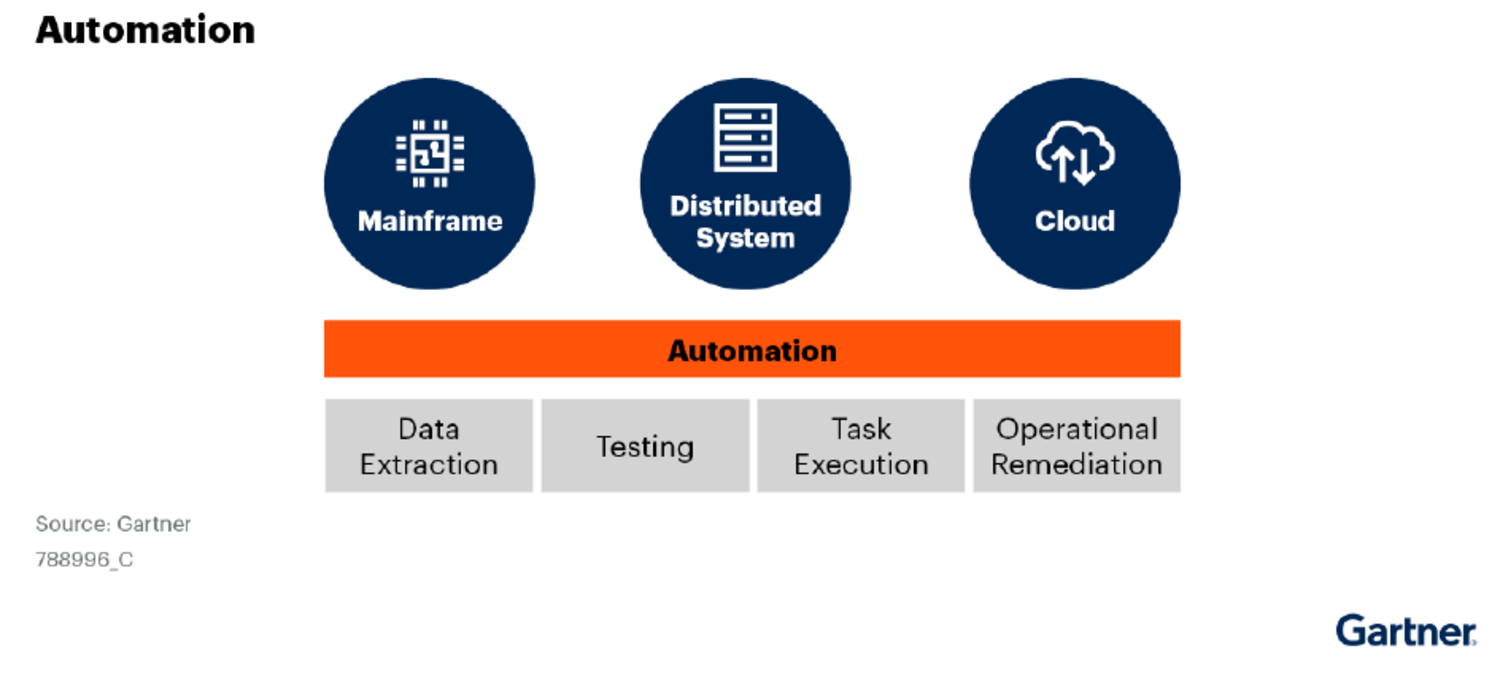
According to Gartner's How to Pursue Mainframe Modernization Patterns research report (available to Gartner clients), "despite widespread focus on cloud, mainframes continue to support many critical workloads." In the same report, Gartner notes that automation is a key enabler of IT productivity.
“Extend automation tools and processes throughout your IT enterprise. Agility and speed can be achieved without additional headcount.”
Gartner, How to Pursue Mainframe Modernization Patterns
By bridging the automation gap between cloud services and on-prem, UAC helps you execute a Leverage strategy with confidence. It keeps mission-critical business processes running smoothly — no matter where they live — and positions your organization to scale modernization efforts over time. Take a look for yourself in the video below:
From Core to Cloud: Unifying IT with Automation
Modernizing your mainframe doesn’t mean tearing down what’s working — it means reinforcing your foundation to support what’s next. The Leverage strategy allows you to modernize without disrupting critical business operations, while aligning your mainframe with today’s hybrid IT demands and tomorrow's new technologies.
By integrating modern technologies, updating core applications, and adopting a platform like Stonebranch UAC, you can extend the value of your mainframe while unlocking new levels of competitive advantage and operational efficiency. UAC bridges the automation gap across mainframe, cloud, and container environments — helping you orchestrate, optimize, and evolve your enterprise IT from the inside out.
Ready to get started? Contact us to learn how Stonebranch can support your mainframe modernization journey.
Start Your Automation Initiative Now
Schedule a Live Demo with a Stonebranch Solution Expert

